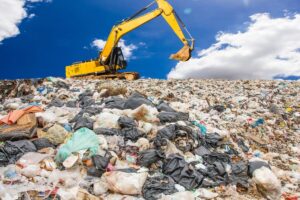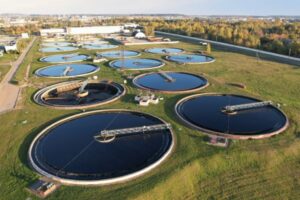City leaders across the USA are facing unprecedented pressures. Budgets are tight, landfill space is dwindling, and citizens are demanding action on climate change and environmental quality. Managing a city’s waste and securing its energy future have become complex and intertwined challenges. For many municipalities, a simple “collect and dispose” strategy is no longer viable. In response, a growing number of cities are embracing a strategic and transformative approach: integrated waste-to-energy (WtE) solutions. This comprehensive model, championed by innovators like Clean Stream Fuels, offers a path to solve multiple problems at once, creating more resilient, sustainable, and economically sound communities.
The Pressures on Modern Municipalities
A municipality’s waste management and public works departments are tasked with ensuring the health and safety of their citizens, but they are often constrained by significant hurdles:
- Rising Disposal Costs: As landfills fill up, tipping fees and transportation costs escalate, straining municipal budgets and forcing difficult choices.
- Energy Price Volatility: Reliance on a single energy grid exposes cities to market fluctuations, making long-term planning difficult and costly.
- Environmental & Regulatory Mandates: Cities are under pressure to reduce greenhouse gas emissions, minimize water pollution, and adhere to stricter environmental regulations.
- Resource Inefficiency: Valuable resources (organic waste, wastewater) are often buried or discharged, representing a lost opportunity for economic and environmental gain.
The Integrated Solution: Beyond a Single Technology
An integrated waste-to-energy solution moves beyond a single-purpose facility. It’s a holistic system designed to handle diverse municipal waste streams—from residential organic waste to sewage sludge—and convert them into multiple valuable outputs. Clean Stream Fuels’ integrated model often includes a combination of cutting-edge technologies to address these needs:
- Hydrothermal Liquefaction (HTL): An ideal solution for high-moisture organic waste like municipal sewage sludge and food scraps, converting them into renewable biocrude oil. This not only solves a disposal challenge but also creates a valuable energy resource.
- Anaerobic Digestion (AD): An effective method for handling organic waste, producing biogas that is upgraded to pipeline-quality Renewable Natural Gas (RNG). This provides a steady source of clean energy that can power city fleets, buildings, or be sold for profit.
- Wastewater Reuse Systems: Often integrated to treat and purify water from both the AD and HTL processes as well as broader municipal wastewater, ensuring precious water resources are conserved and reused.
By integrating these technologies, a city can create a resource recovery hub that maximizes efficiency, minimizes waste, and produces a range of valuable resources.
The Tangible Benefits for a City’s Bottom Line and Community
Adopting an integrated WtE solution provides municipalities with a compelling suite of benefits:
- Economic Resilience: Cities can drastically reduce landfill fees and generate new revenue from the sale of renewable energy (RNG, biocrude) and byproducts like biofertilizer. This creates a predictable and stable economic foundation, protecting the city from volatile external markets.
- Environmental Leadership: This approach provides a powerful pathway for meeting and exceeding sustainability goals. It prevents potent methane emissions from landfills, conserves land, and reduces reliance on fossil fuels, all of which contribute to a city’s climate action plan and enhance its reputation as a green leader.
- Community & Social Benefits: WtE projects create local, skilled jobs in the design, construction, and operation of these advanced facilities. By improving waste management and air quality, they contribute to a healthier environment for residents. Furthermore, building local energy independence and a circular economy strengthens the community’s overall resilience.
The Clean Stream Fuels Partnership: Your Path to a Sustainable Future
Clean Stream Fuels serves as a dedicated partner to municipalities across the USA, helping them navigate the complexities of adopting integrated waste-to-energy solutions. We don’t offer a one-size-fits-all product; instead, we work closely with city leaders to design a customized system that meets the community’s specific waste streams, population size, and strategic goals. We provide the expertise in technology, project development, and operations to ensure a smooth transition to a smarter, more sustainable system.
By embracing integrated waste-to-energy solutions, municipalities are not just managing waste; they are investing in the future. They are creating cleaner environments, strengthening local economies, and building resilient communities that are prepared to thrive in the decades to come.
To learn more about how Clean Stream Fuels can help your city build a more sustainable and prosperous future, explore our solutions for municipalities or contact our expert team today.
#MunicipalWaste #CitySustainability #WasteToEnergy #SmartCities #CircularEconomy #CleanStreamFuels



